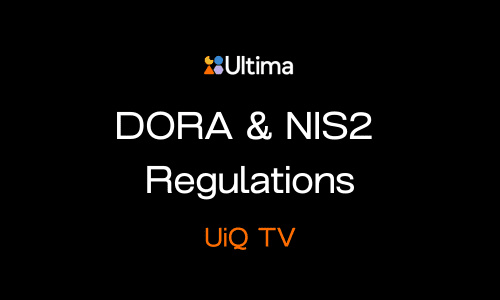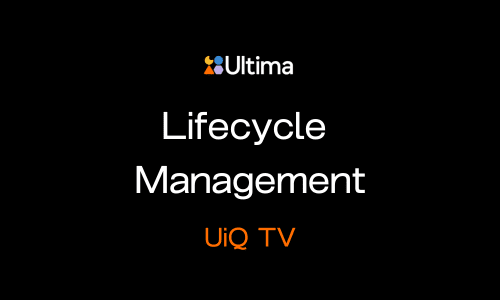UiQ TV: Understanding Clean Rooms
Cyber Recovery Clean Rooms: Your Lifeline When Ransomware Strikes
Book a Cyber Risk AssessmentDiscover why traditional disaster recovery and backup strategies fail against modern ransomware attacks in this essential cyber recovery session with Matt Hudson, CTO, and Mark Lucas from Ultima.
While conventional disaster recovery assumes your environment and data remain uncompromised, cyber recovery must account for a critical reality: sophisticated ransomware attacks deliberately target your backup infrastructure, Active Directory, and recovery systems to prevent restoration.
This fundamental difference requires a completely new approach—the cyber recovery clean room. Learn how clean room environments provide an isolated, sterile recovery infrastructure that enables organizations to restore operations safely while forensic investigations continue, ensuring you can recover from ransomware without re-infecting your systems or paying extortion demands.
- Definition and Importance of Clean Rooms: Understanding how clean rooms ensure a secure recovery environment free from contamination.
- Differences Between DR and Cyber Recovery: Why traditional DR plans might fall short during a cyber attack and the necessity of cyber recovery.
- Key Components of a Clean Room: The role of Commvault’s control plane, cloud-based targets, and the importance of an isolated recovery environment.
- Active Directory and Cyber Resilience: The critical role of Active Directory in cyber recovery and how clean rooms address this.
- Future-Proofing with Clean Rooms: How clean rooms aid in compliance, regulation, and potentially lowering cyber insurance premiums.
Matt and Mark explain the three-tier recovery hierarchy—backup, disaster recovery, and cyber recovery—and why each serves distinct purposes in your resilience strategy. The discussion highlights a sobering statistic: the vast majority of ransomware attacks specifically target Active Directory because compromising your identity infrastructure prevents any meaningful recovery attempt.
A properly configured clean room addresses this vulnerability by maintaining immutable backups of critical systems in an air-gapped environment, allowing you to rebuild your Active Directory, domain controllers, and essential services from known-good states. This approach transforms your cyber resilience posture from hoping backups work to guaranteeing recovery capability even when attackers have compromised your primary environment for weeks or months before detection.
Beyond technical recovery capabilities, the session addresses the business value of cyber recovery preparedness, including reduced cyber insurance premiums for organizations demonstrating robust recovery capabilities and compliance with increasingly stringent regulatory requirements around operational resilience.
Whether you’re evaluating cyber recovery solutions like Cohesity’s clean room technology, assessing your current backup vulnerabilities, or building comprehensive incident response playbooks, this video provides the strategic framework IT leaders need to protect their organizations from the devastating impact of ransomware. Don’t wait until an attack to discover your recovery plan won’t work—proactive clean room implementation ensures business continuity when cyber incidents occur.
Contact us
Is your organization prepared to recover from a ransomware attack?
Book a backup and disaster recovery assessment with Ultima to evaluate your current backup vulnerabilities and explore clean room solutions.
Book a Cyber Risk AssessmentGet in touch
FAQs: Clean Rooms & Cyber Recovery
A cyber recovery clean room provides an isolated, air-gapped environment that is guaranteed free from cyber threats, allowing organizations to safely restore systems and data from immutable backups without risk of re-infection.
This enables business operations to continue while forensic investigations proceed in the compromised production environment.
Disaster recovery assumes your environment and data remain uncompromised and focuses on recovering from infrastructure failures or natural disasters.
Cyber recovery assumes your environment is compromised by attackers who may have targeted your backup systems, requiring an isolated clean room environment to ensure recovery from known-good, immutable backups that cannot be encrypted or deleted by ransomware.
Active Directory is the primary target in most ransomware attacks because compromising identity infrastructure prevents organizations from recovering other systems.
Without clean Active Directory backups in an air-gapped environment, attackers can maintain persistence, prevent authentication, and stop any meaningful recovery attempt. Secure Active Directory backups in a clean room are essential for successful ransomware recovery.
While technically possible, clean rooms are designed for temporary use during recovery and investigation phases.
Organisations typically transition back to their production environment once it has been verified clean, rebuilt, and secured. However, the clean room infrastructure remains available for future incidents, providing ongoing cyber resilience capability.
Backup provides data copies for accidental deletion or corruption. Disaster recovery restores entire systems after infrastructure failures, assuming data integrity.
Cyber recovery operates in a compromised environment where attackers have targeted backups and infrastructure, requiring isolated clean room environments with immutable backups and the ability to rebuild identity systems like Active Directory from known-good states.
A cyber recovery clean room provides an isolated, air-gapped environment that is guaranteed free from cyber threats, allowing organizations to safely restore systems and data from immutable backups without risk of re-infection.
This enables business operations to continue while forensic investigations proceed in the compromised production environment.
Disaster recovery assumes your environment and data remain uncompromised and focuses on recovering from infrastructure failures or natural disasters.
Cyber recovery assumes your environment is compromised by attackers who may have targeted your backup systems, requiring an isolated clean room environment to ensure recovery from known-good, immutable backups that cannot be encrypted or deleted by ransomware.
Active Directory is the primary target in most ransomware attacks because compromising identity infrastructure prevents organizations from recovering other systems.
Without clean Active Directory backups in an air-gapped environment, attackers can maintain persistence, prevent authentication, and stop any meaningful recovery attempt. Secure Active Directory backups in a clean room are essential for successful ransomware recovery.
While technically possible, clean rooms are designed for temporary use during recovery and investigation phases.
Organisations typically transition back to their production environment once it has been verified clean, rebuilt, and secured. However, the clean room infrastructure remains available for future incidents, providing ongoing cyber resilience capability.
Backup provides data copies for accidental deletion or corruption. Disaster recovery restores entire systems after infrastructure failures, assuming data integrity.
Cyber recovery operates in a compromised environment where attackers have targeted backups and infrastructure, requiring isolated clean room environments with immutable backups and the ability to rebuild identity systems like Active Directory from known-good states.




